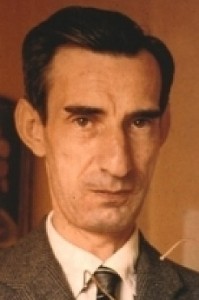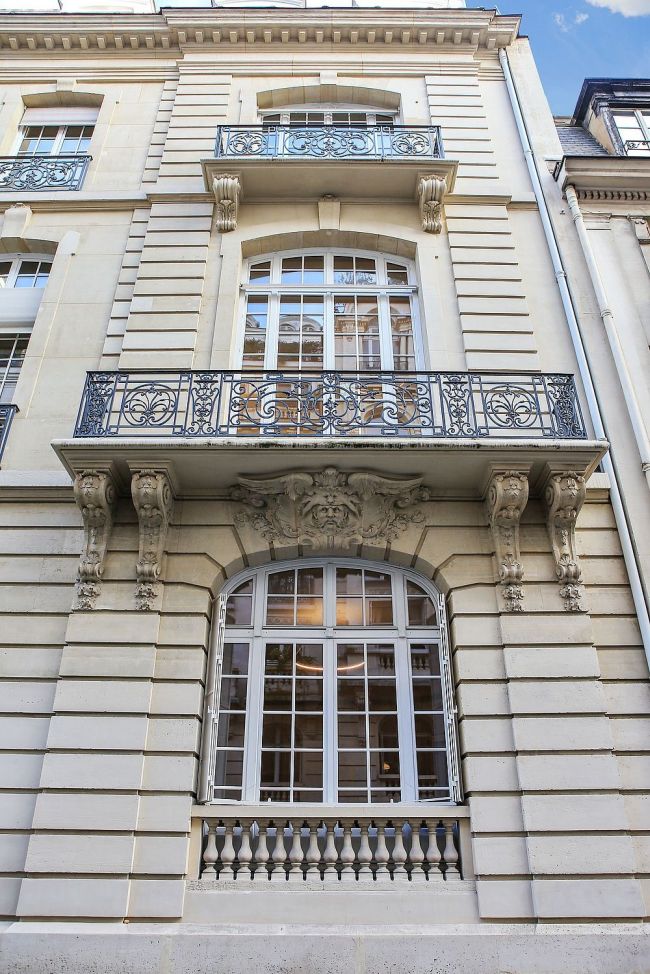PIERRE PLANTARD'S FAMILY-TREE
© Octonovo
(Proceedings of the 2012 Colloquium)
French Original
'Regarding the spurious sciences, I thought I knew the worth of these sufficiently well to be able to avoid being deceived by the professions of an alchemist, the predictions of an astrologer, the impostures of a magician, or the artifices and boasting of any of those who profess to know things of which they are ignorant.'
René Descartes, Discourse on Method
1. Introduction
Within the mythology of Rennes-le-Château and the Priory of Sion the dynastic pretensions of Pierre Plantard occupy a very special place. Right from the very outset the creator of the Priory of Sion claimed an uninterrupted descent from the Merovingian kings – the most ancient of the French royal dynasties – thus laying claim to a degree of nobility unparalleled in the French aristocracy. Quite apart from the spuriousness of his claimed origins, his boast of an unbroken line of descent was also motivated by fraudulent intentions.
We must of course acknowledge that Pierre Plantard was not the sole architect of this particular piece of fakery, and this is perhaps a point that deserves special emphasis. Once created, the myth span rapidly out of his control, and its ultimate extent was only partly the product of his own intentions and, indeed, plans.
Gérard de Sède, who in 1974 set out to settle some old scores with the creator of his documentary sources, liked to claim that the Merovingians were of extraterrestrial origin. His close collaborators will recognise that as typical of the man and especially of his peculiar sense of humour. But it was above all the authors of l'Enigme Sacrée (The Holy Blood and the Holy Grail) who, in seeking to link their own particular mystagoguery with Mary Magdalene, amplified this very original theory of Merovingian origins by positing a link between the (probably legendary) King Merovech [1] and the line of David via the marriage of Jesus and Mary Magdalene, a claim that was to find some support, especially in the English-speaking world. This fiction (for Henry Lincoln has admitted on several occasions that it was simply made up) has enjoyed some success, to the point of even becoming the main theme of the bestseller by Dan Brown.
It is not our purpose here to outline the trajectory of an idea that simply escaped from its author's control and was then shaped by completely independent forces into something far removed from his original intention – into, indeed, a modern esoteric myth. We shall content ourselves here with once again reviewing the facts of the matter. But first we need to explain two points of methodology: first, since we are primarily concerned with genealogical claims that are governed by the Salic Law we shall focus on the male line; second, since Plantard was a well-known mythomanic and forger, I have decided to simply ignore his own statements on the subject.

Pierre Plantard: Lifelong confidence trickster and swindler
Plantard fabricated the bogus Merovingian genealogies
2. Plantard's family-tree in general
Our researches begin in the 17th century with the arrival at Sémelay (Nièvre) of Jean Plantard (1623-1650) and his son Louis (1645-1673). It should be noted that I haven't been able to establish where the Plantard family originated.
Louis Plantard had three sons and a daughter (Irmine, born at Sémelay in 1672). The eldest son, François (1667-1732), in his turn fathered at least two children, including Jean, the eldest.
Jean (1692-1746) married Madeleine de Rosset. The presence of the particule ‘de’ in this context is interesting. My researches rapidly turned up two famous people with the same surname: François de Rosset (1571-1619), a man of letters of Provençal origin active in the 17th century, and André Hercule Marie Louis de Rosset de Rocozels de Fleury (1767-1810), of a Lorraine family, who was a Duke and First Gentleman of the Bedchamber. He had a rough time of it during the French Revolution and died without issue.
Madeleine, the wife of Jean Plantard, does not seem to have been related to either of these gentlemen, nor does she seem to have enjoyed a particularly high social status.
If we continue to trace the ancestry of the founder of the Priory of Sion we find, among the six children of Jean and Madeleine, that the eldest was also called Jean (1716-1782). He in his turn fathered three sons and four daughters by two marriages. It was the second of his sons by his first marriage who, in departure from the normal rule of seniority, was to keep the male line of the family going.
From Pierre (1739-1790), a farmworker in the hamlet of Vernay in the parish of Sémelay, we pass to his eldest son François (1761-1806), who shared with his brother in the inheritance of a few family-owned fields and who also worked as a farmer. We then come to his eldest son, Jean (1784 – ?) [2]. Jean seems to have enjoyed a higher social status than his forebears – that of a landowner in the hamlet of Verney. He married Marie Clément, the daughter of another landowner in the neighbouring village of Bois-de-Mary, but this marriage seems to have gone haywire because their eldest son, also Jean (1809 – ?) [3] had to work as a day-labourer. Some time after 1841 the Plantards seem to have left Sémelay, presumably because they no longer owned any property there. We find Jean living in Remilly in 1877.
It was his fifth son, Charles Plantard (born at Sémelay 1841 – ?) [4], who was the grandfather of the Grand Nautonier. He worked first as a servant at Châteauneuf (Mars-sur-Allier) and then as a day-labourer residing at La Beurrière in Magny-Cours and then at La Machine. He disappeared without trace, abandoning his three children, including the eldest, Pierre.
3. Pierre (1877-1922)
The father of our hero shared his Christian name. He was born in Magny-Cours (Nièvre) on 11 October 1877 and had two brothers, Louis (1881-1952) and Etienne (1884-1963). The whole family followed him to Paris in the 1900s.
We first find Pierre living about twenty-five miles from Sémelay, in the commune of La Machine, in 1897 where he was working as a coalminer at the Schneider mine.
Granted a deferment from National Service in 1898, in the following year he was passed fit to serve and was recruited into the 37th Artillery Regiment as a 2nd gunner (16 November 1899) before being released from service (30 September 1900) in application of the law of 24 July 1889 [5].
We have been left with this physical description of him: chestnut hair, grey eyes, long nose, average mouth, rounded chin, oval face, height 1.76m [just over 5’ 9’’].
He then worked as a valet and/or butler [6], first at Jouy-en-Josas (1906) then in the 7th arrondissement of Paris at 46 or 47 rue de Varenne [7] (1910-1912). It was in the 7th arrondissement that he married Amélie Marie Raulo [8].
Called up (6 August 1914) into the 59th Artillery Regiment he was transferred to the 81st Heavy Artillery Regiment (7 May 1917) and then to the 71st Heavy Artillery Regiment (1 August 1917) before being demobbed (31 August 1919).
At the end of World War One he resumed employment as a valet.
It was during this period that he was the victim of a fatal accident, which is recorded in the desk-register of the local police.
Pierre Plantard would therefore not really have ever known his father.

The special case of Abbé Plantard
Pierre Plantard would sometimes refer to his relative, Abbé Pierre Marie Joseph Plantard, who was vicar of the basilica of Sainte-Clotilde in Paris.
This gentleman was born on 19 July 1872 in Camoël (Morbihan), the son of Jacques Marie Plantard, a blacksmith (born 1832) and Marie Julienne Gilloury (born 1840).
He went to secondary school at the Lycée Saint-Martin in Rennes before training as a priest at the Major Seminary in Limoges where he was ordained on 29 June 1898. He held various posts:
1898-1902 : Vicar at Saint-Léonard, diocese of Limoges
1902-1903 : Master of Studies at Sainte-Croix, Neuilly
1903-1914 : Missionary to New Mexico (USA)
1914-1919 : Called up, served as health-service chaplain in Arcachon (Gironde)
1919-1922 : Vicar at Rochechouard — Limoges
1922-1929 : Curé at Conjeux, diocese of Limoges
1929-1932 : Professor at Saint-François de Salles, Evreux
1932-1935 : Chaplain and auxiliary vicar, Arcueil
1935 (1 February) : Chaplain at the Percy military hospital at Clamart
1938 (29 January): Vicar of the basilica of Sainte-Clotilde in Paris
His family-tree can be summarised as follows:
• Pierre, born around 1735 at Péaule (Morbihan), married Angélique Seignard, by whom:
• Jean-Marie born 1768, married Marie Leroy, by whom:
• Pierre Marie, born 1806, married Jeanne Bourse, by whom:
• Jacques Marie, born 1832, married Julienne Gilloury, by whom:
• Pierre Marie Plantard.
It is quite clear that these two families are not related and that once again we have yet another tall-story for which the good vicar of Sainte-Clotilde would certainly not have been responsible.
4. Some personal impressions by way of conclusion
I won't ramble on about the obvious discrepancies between the very modest origins of Pierre Plantard and his dynastic and esoteric pretensions. I prefer just to underline the fact that the phenomenon that we know of as Pierre Plantard actually came from very humble beginnings.
We should note that the usual procedure for dynastic succession – inheritance through the eldest son – was not always respected in his family. This is very easily established and it is astonishing that Plantard should have allowed himself to go on about a subject which a moment's reflection would have told him could be very rapidly contradicted.
The business about the vicar of Sainte-Clotilde turns out to be yet another lie, one that tells us so much about Plantard's opportunism, his unscrupulous character, and also the lack of care with which he created his various fantasies. I'm afraid that when it comes to rational analysis, the only sense one can make of the myths generated by the Great Mystifier is that discussed by the author Geneviève Beduneau.
Footnotes
[1] According to Gregory of Tours, ‘some people claim that the lineage of Chlodio derives from King Merovech’, but his existence is not attested by any contemporary source. The statement by the authors of l'Enigme Sacrée (The Holy Blood and the Holy Grail) that Chlodio could have appointed his son-in-law as king in defiance of the Salic Law is considered unlikely.
[2] At a later date than that of the birth of Manette on 13 November 1830 and the marriage of his eldest son on 9 September of the same year.
[3] At a later date than that of the birth of Charles, 17 September 1841.
[4] At a later date than that of the death of his son Pierre, 30 August 1922.
[5] The Law of 24 July 1889 concerns the protection of children. The father, Charles Plantard, had been declared absent by a judgment of the Court of Nevers on 14 November 1899.
[6] His job-titles differ depending on sources.
[7] With his brother Etienne.
[8] Amélie Marie Raulo: born 12 January 1884 in Nantes (Loire-Atlantique), daughter of Athanase and Anne Marie Evain. Died 18 February 1965 in Redon (Ille-et-Vilaine).
[9] The Elisseieff family were White Russians who made their fortune from delicatessens. They left Russia at the time of the 1917 Revolution.

44 Rue Copernic, Paris - where Pierre Plantard's father was the victim of a fatal accident
|


